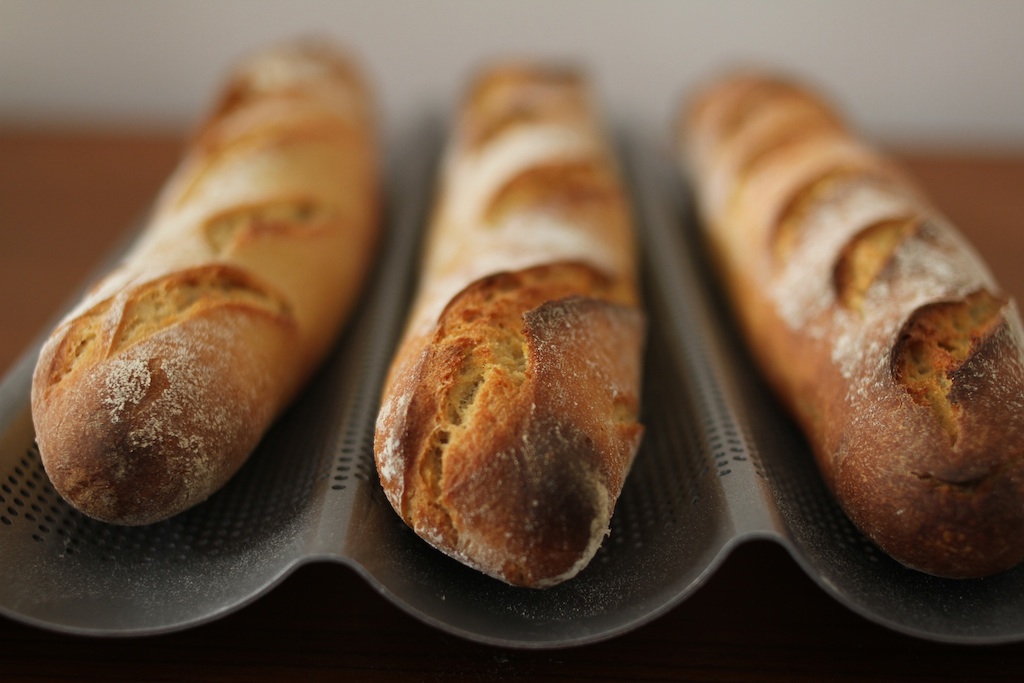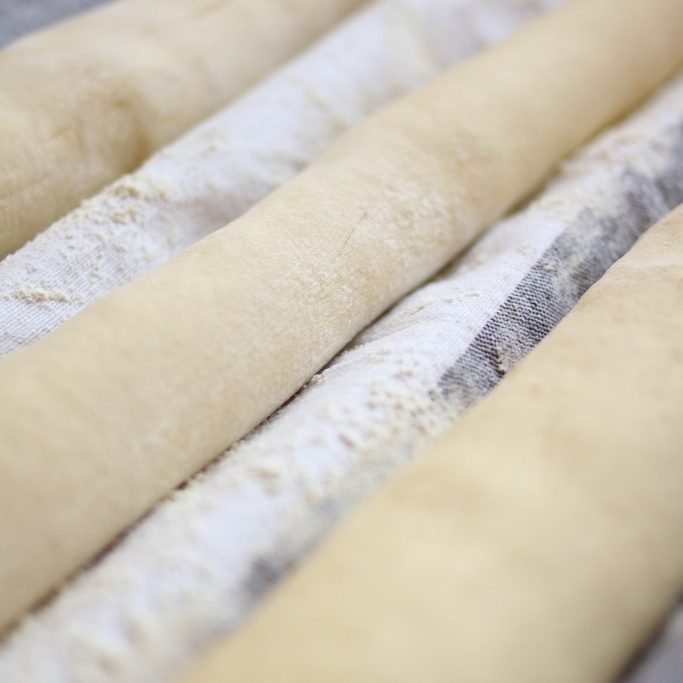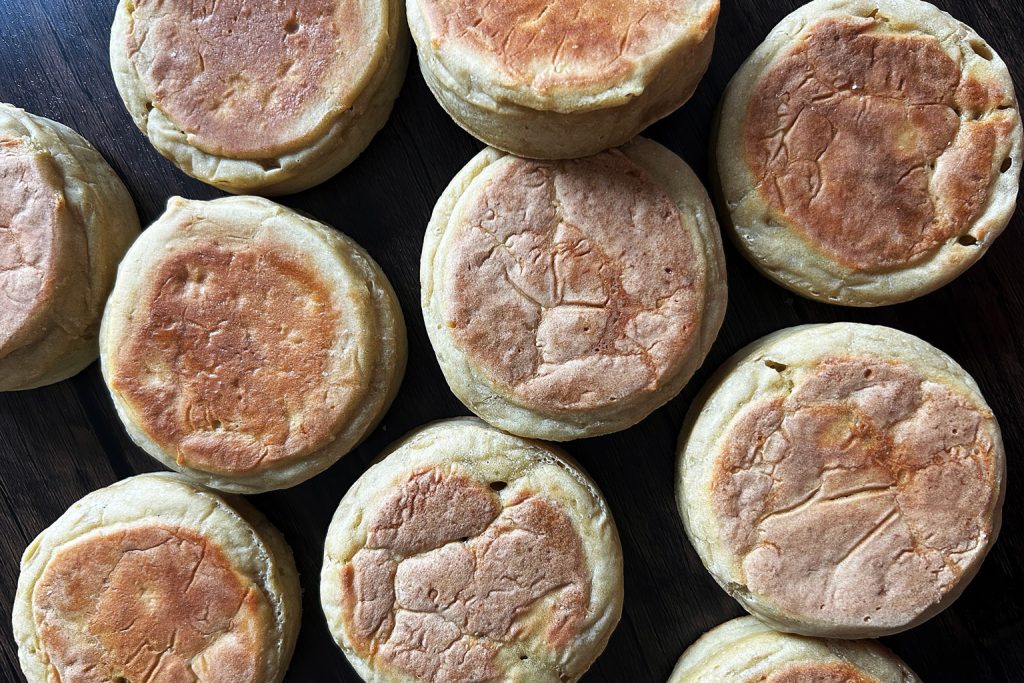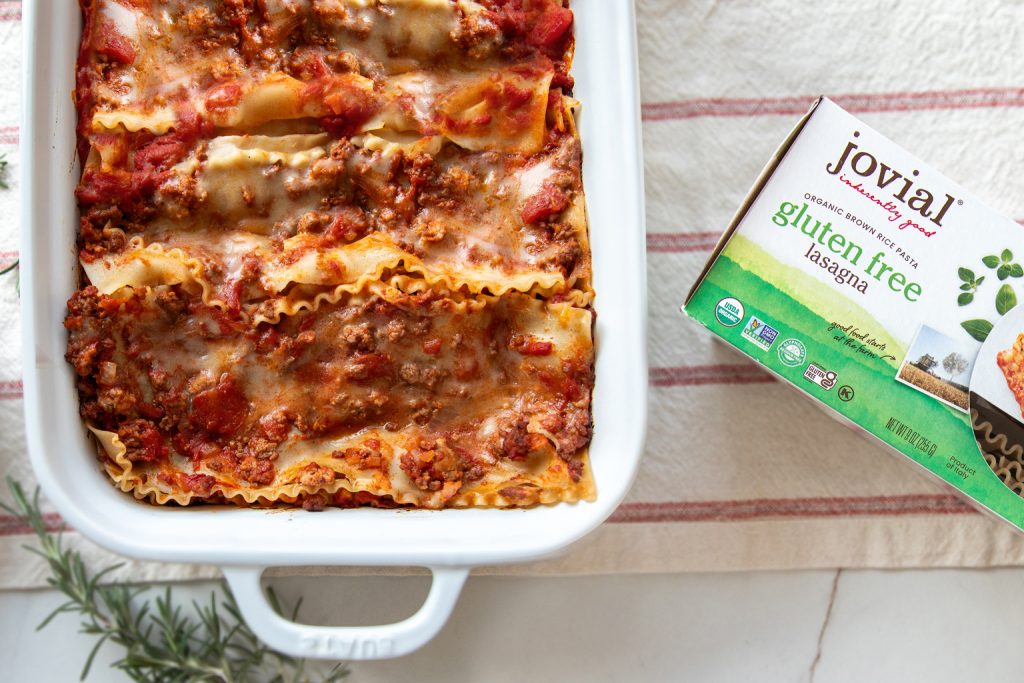Einkorn French Baguette Recipe
Recipes
Of all of the breads we have baked with einkorn flour, French baguettes have to be on the top of our list of favorites. This recipe is offered in both sourdough and yeast versions.
How to Make Baguette or Sourdough Baguette
Ingredients
INGREDIENTS PATE FERMENTÉE
- ¾ cup plus 1½ tbsp. (100g) jovial All-Purpose Einkorn Flour
- ¼ cup less 1 tsp. (50 g) of warm water
- ¹/3 tsp (1g) of dry active yeast or 25g of sourdough starter
INGREDIENTS ON DAY OF BAKING
- 5¾ cup plus 1 tbsp. (700g) of jovial all-purpose einkorn flour
- 1¾ cup plus 3 tbsp. (450g) of warm water
- 2 tsp. (12 g) of sea salt
- all of the pate fermentée from the night before
- 1 tsp. (3 g) of dry active yeast, dissolved in 1 tbsp. (14g) of warm water or no additional starter if you are baking sourdough
- plus ¾ cup (90g) of jovial einkorn flour for dusting your work surface
Instructions
INSTRUCTIONS PATE FERMENTÉE
The pate fermentée made with sourdough starter above will expand less than the one below, made with dry active yeast. For the sourdough recipe, you will not need additional starter as the pate fermentée will be the leavening for the bread. For the yeast recipe, you will be adding more yeast on the day of baking, in addition to using all of the pate fermentée.- Dissolve yeast or sourdough starter in the water, then add flour and knead until you have a firm dough.
- Store in a sealed container in a dark place for 10-12 hours.
INSTRUCTIONS FOR THE BREAD
- For this recipe, you will autolyse the flour, which means adding water to the flour before the yeast so that flour gets fully hydrated. To autolyse the flour, heat water up to hot but not boiling and pour over the flour. Mix the liquid into the flour with a wooden spoon until all of the liquid is absorbed by the flour. Cover the bowl and let stand for 15 minutes.
- Once the autolysing step is complete, you will then add the pate fermentée to the flour, along with the salt and knead in the bowl for a minute. If you are making this recipe with dry active yeast, you will add the additional dissolved yeast now. If you are using sour dough, no additional starter is added. The dough will be fairly sticky, so dust a clean work surface with ¼ cup (30g) of flour and turn out the dough. You will want to knead the dough for a few minutes more until it is nice and firm. It is best not to add additional flour unless your dough is very sticky. Return to the mixing bowl and let stand covered in a warm, dark place for 1 hour.
- After the first hour, your dough will not have risen that much and you will not see air bubbles. Dust your work surface with another ¼ cup (30g) of flour and turn out the dough, then knead until all of the flour has been absorbed. Now, turn the dough by pushing down the dough in a rectangle and fold in each of the four corners to make a square, then knead again into a firm ball of dough. Let stand covered in a warm, dark place for 1 hour for the yeasted recipe and 2 hours for the recipe with sourdough starter.
- When the dough is ready, it still will have expanded but will not have doubled in size. Letting einkorn dough double in size weakens its already very weak gluten, resulting in a bread that cannot hold its structure. You will know the dough is ready when you press down on the dough with your finger and the dough feels firm but an indent will remain. At this point, you should preheat your oven to 470°F with your baking sheet in the middle rack. On the bottom of your oven, place a baking dish with two inches of water so your oven will be steamy during baking.
- Divide the dough in three parts, roll each piece into a smooth ball and let rest for 15 minutes, covered by your mixing bowl.
- Take one of the balls of dough and begin to roll into a log shape that is about 5 inches long, pinching together seems and tightening. You will want the dough to be fairly wet so it sticks to your counter while you are rolling, which will help form the shape. If you feel large air pockets, start again until you have a nicely formed log shape piece. Dust very lightly with some flour and continue to roll, pressing lightly from the center to the ends until your baguette is as long as desired. Press a little firmer at the ends to taper.
- If you are using a baguette pan, place a clean cloth dusted with flour on top with the long ends hanging over each side. Place each baguette in place, then fold over the ends to cover. Let stand for 30 minutes for the yeast recipe and 60 minutes for the sourdough before baking. If you do not have a baguette pan, you can place the loaves inside the folds of a thick kitchen cloth that have been dusted with flour.
- If you are using a baguette pan, you flip the loaves over on to the baking sheet, then slash the loaves with a bread razor or sharp knife. If you are not using a baguette pan, quickly lift up the loaves and place on the baking sheet then slash.
- Bake for 20-25 minutes, rotating the baking sheet after 10 minutes. If you like the crust crisp, you want to rotate each loaf, changing their position on the baking rack at least two times in the last 10 minutes for even browning.
- Let cool at least 1 hour before slicing.









